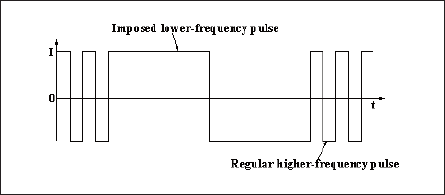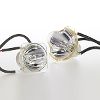光技術情報誌「ライトエッジ」No.31
2008.6 ICOPS2008 (35th IEEE International Conference on Plasma Science)
(2008年10)
MODELING OF A PROJECTOR LAMP OPERATED
BY A U-DRIVE PULSE POWER SOURCE
Khokan C. Paul, T. Takemura, T. Hiramoto, and T. Igarashi
R&D Center, Ushio Inc.,1-90 Komakado, Gotenba, Shizuoka 412-0038, Japan
Extremely high-pressure mercury lamps, which operate at a pressure of around 20 MPa, have been into significant use in today's projector-lighting. These lamps are found to provide outstanding performance and hence have been grabbing the market very rapidly. In developing such specialty lamps, the companies have been facing a key-problem of sustaining the electrodes because they become over-heated during operation.
This immense heating of the electrodes causes to raise the tip temperature, especially of the anodic-phase electrode during an alternating-current operation, far above the melting point, and as a result, electrodes' damage/evaporation is significant. Such a situation is very detrimental to the lamp performance and longevity. A frequency modulated power supply, U-drive pulse power source[1], has been reported to improve electrodes and lamp performance. A U-drive source superimposes a low frequency current-pulse within a fundamental high-frequencycurrent-pulse intermittently (Fig. 1).
This article is devoted for developing a mathematical model to simulate ultra-high-pressure lamp, which is operated by an alternating current from a U-drive source. The lamp is filled with mercury gas of 10 MPa operating pressure. The model solves the complete set of magnetohydrodynamics within the fluid domain, radiation-considered and radiation-less energy balance equation in the semi-transparent (glass) and opaque (electrodes) domains, respectively. Essential features of the model are discussed in previous report[2]. A square-wave pulse current (of an amplitude of 1.4 A) is taken to have the regular frequency of 400 Hz and the superimposed slower pulse is of 90 Hz. Evaluated time-dependent electrode temperatures for the regular and superimposed frequencies have been found to be consistent with those reported experimentally. The model, thus, demonstrates suitability in predicting performance of a prospective new lamp, subsiding expensive developments of many prototypes and difficult tests.

Fig.1 : Current pulse of the U-drive pulse power source.


